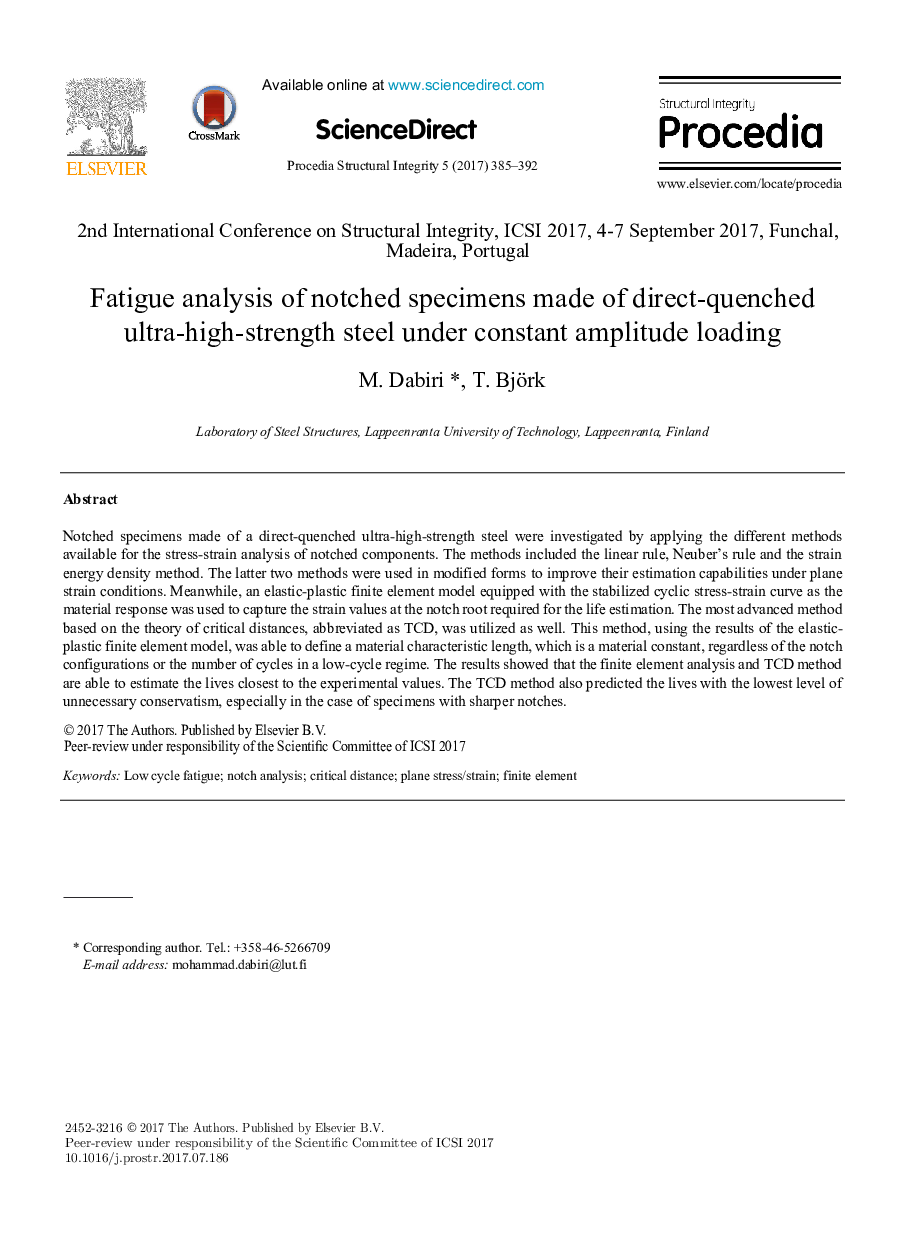| Article ID | Journal | Published Year | Pages | File Type |
|---|---|---|---|---|
| 5452633 | Procedia Structural Integrity | 2017 | 8 Pages |
Abstract
Notched specimens made of a direct-quenched ultra-high-strength steel were investigated by applying the different methods available for the stress-strain analysis of notched components. The methods included the linear rule, Neuber's rule and the strain energy density method. The latter two methods were used in modified forms to improve their estimation capabilities under plane strain conditions. Meanwhile, an elastic-plastic finite element model equipped with the stabilized cyclic stress-strain curve as the material response was used to capture the strain values at the notch root required for the life estimation. The most advanced method based on the theory of critical distances, abbreviated as TCD, was utilized as well. This method, using the results of the elastic-plastic finite element model, was able to define a material characteristic length, which is a material constant, regardless of the notch configurations or the number of cycles in a low-cycle regime. The results showed that the finite element analysis and TCD method are able to estimate the lives closest to the experimental values. The TCD method also predicted the lives with the lowest level of unnecessary conservatism, especially in the case of specimens with sharper notches.
Related Topics
Physical Sciences and Engineering
Materials Science
Materials Chemistry
Authors
M. Dabiri, T. Björk,
